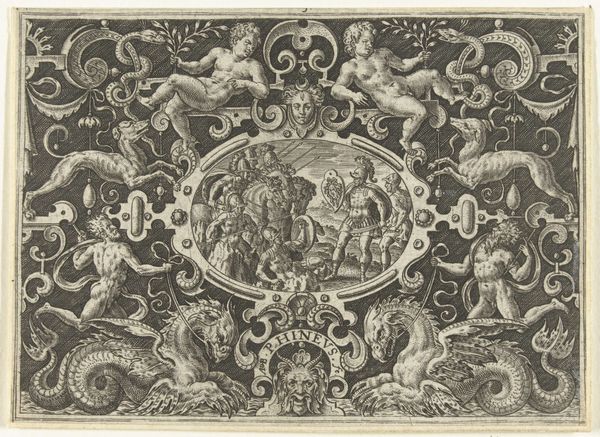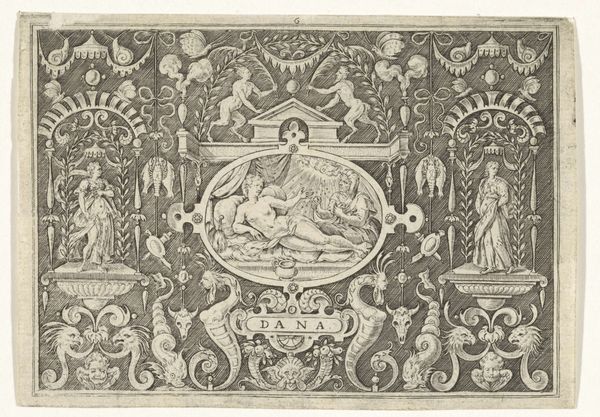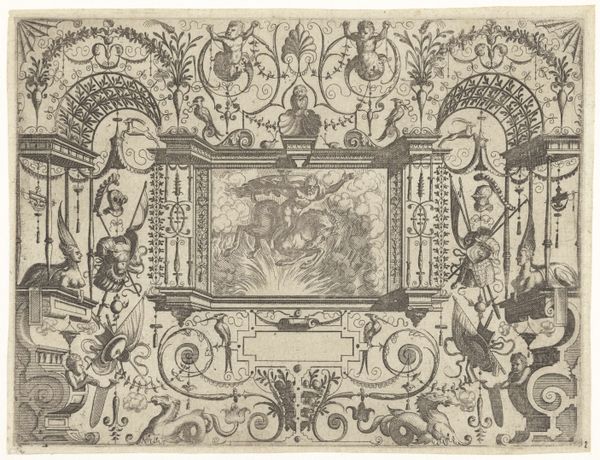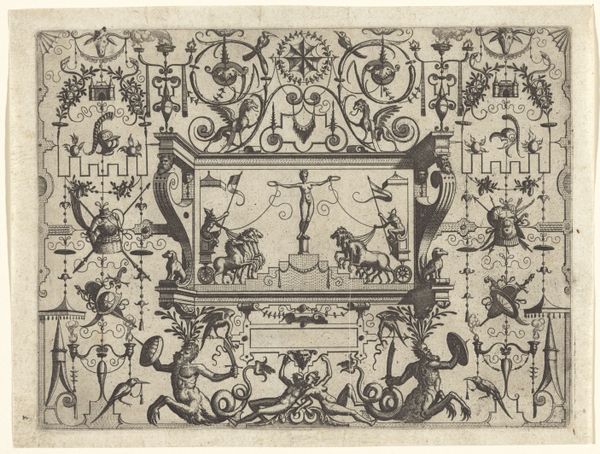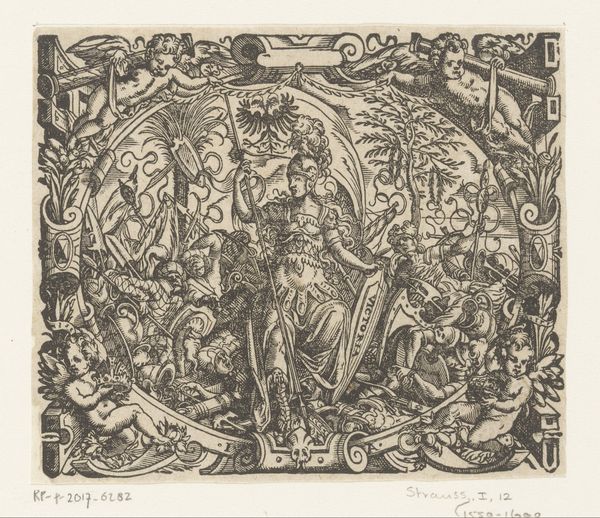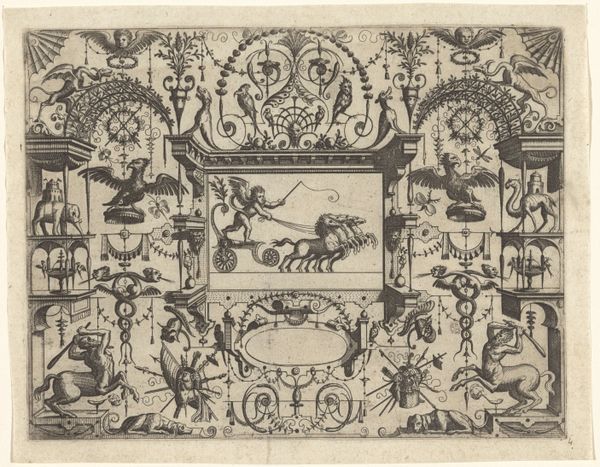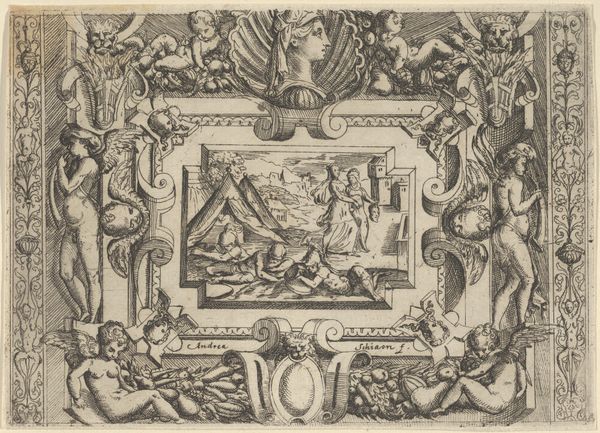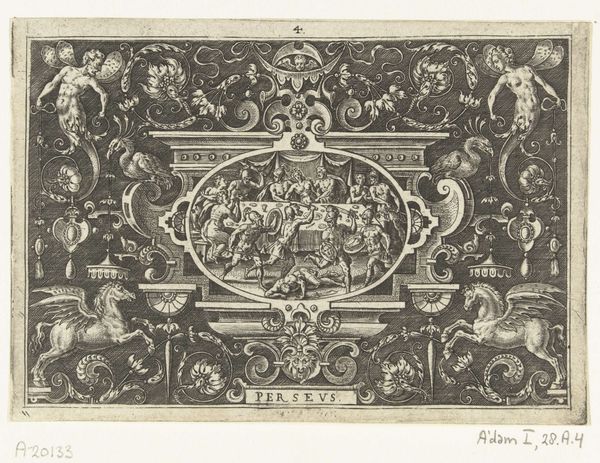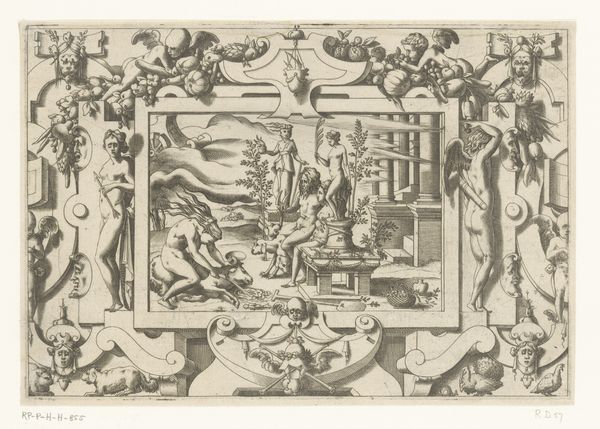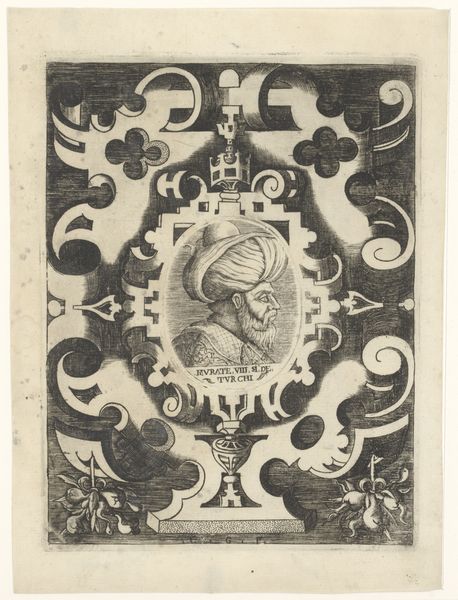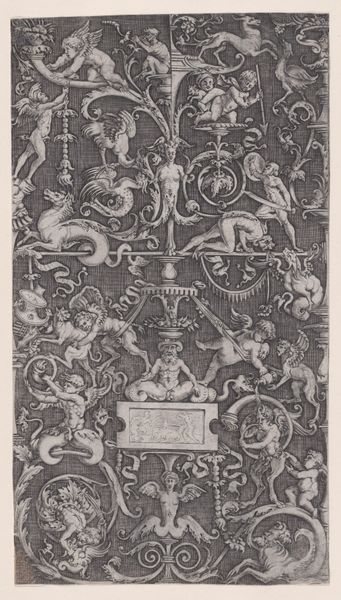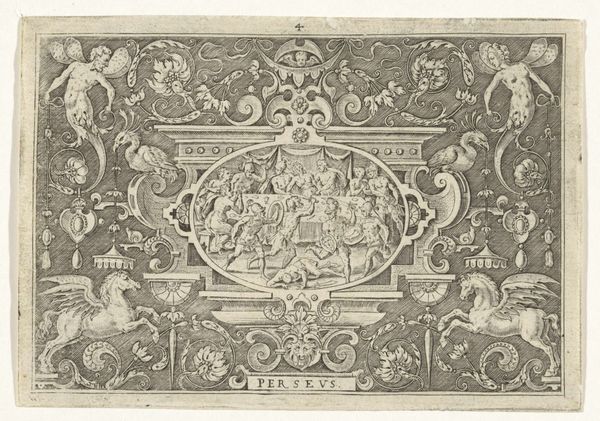
print, engraving
#
allegory
# print
#
old engraving style
#
mannerism
#
figuration
#
line
#
history-painting
#
engraving
Dimensions: height 89 mm, width 125 mm
Copyright: Rijks Museum: Open Domain
Curator: What a fantastically intricate print. Looking at "Cartouche: Perseus met het hoofd van Medusa," created by Abraham de Bruyn in 1584, currently residing at the Rijksmuseum, it immediately speaks to a very Mannerist sensibility. What do you see at first glance? Editor: Well, beyond the rather dense ornamentation, the central image, Perseus triumphant, it's all very stark, wouldn't you say? The high contrast achieved through the engraving technique creates a dramatic, almost theatrical feel. The way light and shadow define the forms is quite striking for a print of this scale. Curator: Exactly. Let's delve into that scale and technique. The tight linework—hallmarks of the engraving process—allows for extraordinary detail, influencing how we interpret the subject. Consider the role of printmaking during the late 16th century. It democratized imagery. Suddenly, classical and mythological narratives weren’t solely accessible to the elite who could afford paintings or sculptures. This engraving served as a vital medium for disseminating cultural ideas and historical references to a wider audience. Editor: True. And looking at how this narrative fits within its time is essential. Perseus beheading Medusa... This image resonated deeply in a period marked by upheaval and power struggles. The print operates on multiple levels. The violence, of course, but also themes of heroism, the triumph of reason over monstrous chaos... These visuals are tools for societal and political rhetoric. And considering this was made during the Dutch Revolt, it can almost be argued that Perseus stands as an allegory for the Dutch struggle against Spanish rule. Curator: I agree, the context is vital. But it's worth dwelling a bit longer on de Bruyn's methods. Think about the manual labor. This wasn't some quick, gestural sketch. It’s a carefully considered and labor-intensive creation. Someone designed the work, prepped the metal, and meticulously etched the design. The very act of making becomes significant, doesn't it? Each line, each flourish reflects both artistic intention and a huge investment of time and skill. Editor: A worthwhile point. The objecthood and circulation of these images significantly shape the historical landscape. This wasn't just about aesthetics; it was about power. The power to influence, the power to educate, the power to control the narrative, all through carefully made and widely distributed objects. Curator: Looking at "Cartouche: Perseus met het hoofd van Medusa" gives us not only insight into printmaking techniques, but also its societal role in the late 16th century. The power and possibilities available in Abraham de Bruyn’s process—its place and meaning, if you will—provides insight into history and beyond. Editor: Indeed. Considering its historical relevance adds another rich layer of perspective, showcasing its role within society's evolution.
Comments
No comments
Be the first to comment and join the conversation on the ultimate creative platform.
